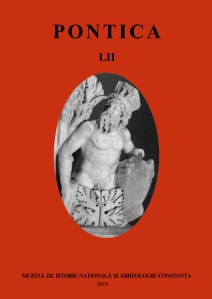Considerații privind reinterpretarea eneoliticului târziu din nord-estul Munteniei în contextul descoperirilor recente de la Pietroasa Mică – Gruiu Dării
Considerations on Reinterpreting the Chalcolithic in North-eastern Wallachia in the Context of Recent Discoveries at Pietroasa Mică – Gruiu Dării
Author(s): Laurențiu GrigorașSubject(s): History, Anthropology, Social Sciences, Archaeology, Cultural history, Local History / Microhistory, Ancient World
Published by: Muzeul de Istorie Națională și Arheologie Constanța
Keywords: Pietroasa Mică - Gruiu Dării;Chalcolitic; Cernavodă I; Cucuteni B;
Summary/Abstract: The archaeological researches carried out in 2018 at Pietroasa Mică - Gruiu Dării contributed to the identification of some novel aspects regarding the Chalcolithic layer from this site and allowed, in the context of the discoveries from here and by reference to similar ones, the reinterpretation, from an informational and terminological point of view, of some subjects relevant for a more nuanced definition of the features of the Chalcolithic in north-eastern Wallachia. A novelty of the recently concluded researches was the discovery of ceramic materials belonging to the Cernavodă I type (with the addition of crushed shell) different in terms of decoration (probably Ib according to the analogies presented) to the one known from the previous researches from Gruiu Dării (Ic). The presence of the Cernavodă elements on a Cernavodă Ib-Ic - Cucuteni B2 chronological horizon is not a novelty for the similar discoveries in north-eastern Wallachia. The identification of two levels (superior - N 1 and inferior - N 2) allowed to establish possible correlations between their stratigraphic sequence and the stylistic differences noted, in particular, in the Cernavodă I type ceramics (with type "C" presence). These findings seem to reflect the existence of distinct stages of settlement on the site, corresponding to chronological horizons represented archaeologically by the mentioned levels. Moreover, the absence of "typical" Cucuteni or Cernavodă I sites prior to Cernavodă I - Cucuteni B deposits from Gruiu Dării and the entire northeast of Wallachia supports the theory of the penetration of the communities belonging to these cultural environments to a Chalcolithic horizon. The representation in balanced proportions of materials specific to the Cernavodă I and Cucuteni B environments in the sites belonging to the Chalcolithic from northeast Wallachia requires the reinterpretation of their cultural classification in the sense of abandoning the exclusive attribution of such discoveries (Cernavodă I - Cucuteni B) to the Cernavodă culture. The same argument, well documented archaeologically, of the balanced weight of the archaeological materials characteristic to the two cultural environments identified in the Cernavodă I - Cucuteni B settlements, should lead to the categorical invalidation of the theory of the Cucuteni imports (especially the painted ceramics) from the respective sites. Finding inconsistent approaches to the presence (undoubtedly backed and docu- mented archaeologically) of the "C" type category in the Cernavodă I - Cucuteni B sites requires a reassessment of the importance of the contribution of this ceramic species in the interference and synthesis processes specific to the northeast Wallachia. The diversity of ceramic species resulting from the symbiosis on the Cernavodă I - Cucuteni B reciprocal relationship, but also from the integration of type "C" ceramics in the composition of "host" environments implies, in our opinion, their inclusion in the broader category of archaeological materials of synthesis or interference and renouncing the perpetuation of the use of syntaxes such as the “Monteoru variant”. The considerations presented in this study regarding the re-evaluation of the cultural classification of the Cernavodă I - Cucuteni B sites, the invalidation of the Cucuteni imports theory from these sites, the reconsideration of the "C" type ceramics in the development of the various symbiosis phenomena and the framing of this ceramic species resulting from this process in the broader category of archaeological materials of synthesis or interference may constitute the necessary premises for the development and use of appropriate terminology for the reinterpretation of these aspects from the perspective of the current state of research.
Journal: Pontica
- Issue Year: 2019
- Issue No: 52
- Page Range: 9-38
- Page Count: 30
- Language: Romanian

